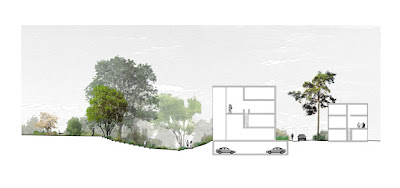
The new urbanism takes time studying how to make the city more sustainable way possible whilst creating spaces that improve the quality of life of citizens. Thus, these new urban neighborhoods are designed to minimize their impact on the environment. But the primary objective of these neighborhoods is not only the interaction with the urban environment in a sustainable manner through aspects such as waste management, efficiency savings and basic resources (water, energy, etc.), integrating agriculture, the nature and management of sustainable mobility, but also affects social aspects as improving citizen relations and environmental education.
Ecobarrios development is a global trend in Western countries but also in emerging. Concerns about climate change and the need to manage the planet's natural resources responsibly makers has led to urban local government to find new ways of growing to meet the needs of its citizens. In principle these neighborhoods have emerged as pilot initiatives to educate the public of their importance.
Spanish cities like Madrid, Barcelona, Toledo, Granada, Pamplona, Segovia and Zaragoza have joined these new urban operations.
Surfing the net in search of some interesting example of this new concept proposal ecobarrio found a river to the island of Saint Denis, Paris by the Dutch architectural firm West 8.

The winning proposal for this contest in the city ecobarrio Senna by West 8 with ING-Bremond emphasizes the insular nature of the area making the most of their relationship with the river. The project involves the upgrading of the industrial area of the Island of Saint Denis (refers to a section of old warehouses of Parisian department stores) improving the relationship with the neighboring areas of the city. It also seeks to interrelate and communicate different parts of the island by creating a new pedestrian avenue bike path along the river bank. The aim of the proposal is to combine residence, work and leisure with a significant typological variety. It is a planned mixed residential sector 435 housing, economic activities, artists' studios and a nautical.




The architectural typologies used probably debatable though management and river connectedness I find very interesting.

Now, There are many projects in this line of self-reliance and sustainability. One of them is spectacular and should be analyzed in detail is the that proposed for Abu Dhabi, Foster and Partners, Masdar City.
S epude link in this direction
http://www.fosterandpartners.com/Projects/1515/Default.aspx
This you pose in Abu Dhabi is looking good and the images are very successful. Achieving energy savings with climatic conditions of the place should be a challenge. Anyway not think they have economic problems…
I liked the article. I think everyone should go further in investigating these issues. Most of the population lives in cities, which have evolved into an aggressive environment for its inhabitants, besides being consumers spaces large amount of energy and producing large quantities of waste. On the other hand, public spaces are not invited to the relationship between people and I think this would be changed. I've been also researching on this last topic and I hope to write something on the blog soon.
Ralf, I'm glad you get carried away with the theme, by our previous conversations in the study, I think we increasingly clear that planning is the discipline that has more to say about sustainability, however rotten it is the buzzword by Endesa and other….
a hug to everybody
carlos